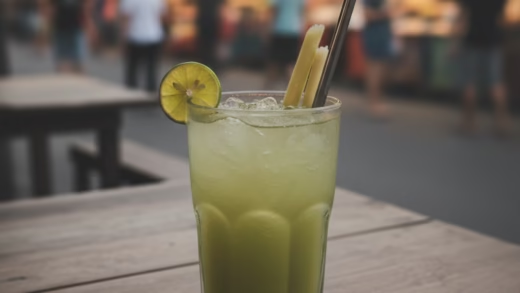Buah Salak

Introduction
Buah Salak—commonly known as “snake fruit”—stands as one of Southeast Asia’s most recognisable and culturally significant tropical fruits. Its scaly reddish-brown skin, unique taste profile, and versatile culinary applications have positioned it as a powerful symbol of regional identity and agricultural heritage. In Malaysia, Buah Salak has transitioned from a traditional household fruit to a modern culinary ingredient used in snacks, desserts, beverages, and premium agro-tourism showcases. This article blends cultural appreciation with strategic market insights to reflect the fruit’s evolving importance within Malaysia’s food ecosystem.
Origin
Buah Salak originates from the Indonesian archipelago, primarily Java and Sumatra, where it has been cultivated for generations. Botanically classified as Salacca zalacca, it belongs to the Arecaceae (Palm) family and flourishes in humid lowland terrains. Its expansion into Malaysia—especially Sabah and Sarawak—was facilitated by centuries of regional trade and the natural adaptability of the species.
The salak palm produces fruit in tight clusters at its base, offering high yield potential and efficient land utilisation. These characteristics make it an important crop for community farming, smallholders, and tropical fruit enterprises targeting niche local and international markets.
Category
| Scientific Name | Salacca zalacca |
|---|---|
| Family | Arecaceae |
| Category | Tropical Fruit |
| Type (Seasonality) | Semi-seasonal with mid-year and year-end peaks |
Appearance
Buah Salak features a compact, oval shape comparable to a large chestnut. Its defining attribute is the reddish-brown, scale-patterned rind that resembles a snake’s skin. The flesh inside typically contains three lobes of creamy, pale yellow fruit surrounding hard, glossy seeds. The flesh is firm, shiny, and crisp, with natural ridges that enhance its distinctive appearance.
Popular Varieties
| Variety | Local Name | Distinctive Features | Region of Prominence |
|---|---|---|---|
| Salak Bali | Salak Gula Pasir | Rich sweetness, crisp texture, premium-grade quality | Bali, Indonesia |
| Salak Pondoh | – | Strong aroma, low acidity, widely commercialised | Java, Indonesia |
| Salak Sabah | – | Firm flesh, mild sweetness, locally cultivated | Sabah, Malaysia |
| Salak Sarawak | – | Balanced sweet-tangy profile | Sarawak, Malaysia |
| Salak Bangkok | – | Larger fruit size, moderate sweetness | Thailand |
Preparation
Buah Salak can be enjoyed and prepared in various ways, including:
- Fresh consumption after peeling
- Snacks, such as dried chips, candied salak, and pickled salak
- Desserts, including compotes, jellies, puddings, and fruit mixes
- Traditional cuisine, such as kerabu salads and local appetisers
- Beverages, including juices, infused drinks, and fermented creations
Equipment
- Paring knife (optional; fruit is often peeled by hand)
- Serving bowl
- Storage container
- Gloves for harvesting the spiny palm
Taste
The flavour profile of Buah Salak is complex and refreshing. Depending on the variety, it ranges from sweet and mildly acidic to honey-like with subtle citrus undertones. Premium types such as Salak Bali deliver an almost caramel-like sweetness, making them popular in gourmet fruit presentations.
Texture
Buah Salak is renowned for its firm, crunchy texture. The flesh can be slightly dry or moderately juicy, depending on ripeness and variety. This compact, crisp bite is one of the fruit’s strongest culinary appeals.
Aroma
The scent of Buah Salak is delicate, mildly floral, and subtly sweet. Its fragrance is moderate, making it appealing even to consumers sensitive to more intense tropical fruit aromas like durian.
Cultural Significance
Buah Salak holds cultural value across the Nusantara region. In Malaysia, it is often exchanged during visits, enjoyed during festive periods, and featured prominently in rural markets and roadside stalls. In Sabah and Sarawak, it is not just a fruit but a representation of local agricultural wisdom, attracting agro-tourism enthusiasts exploring traditional cultivation landscapes.
Regional Cultivation
| State/Region | Famous For | Harvest Period |
|---|---|---|
| Sabah | Premium Salak Sabah | June–August; November–January |
| Sarawak | Semi-wild and domesticated varieties | Mid-year peak |
| Peninsular Malaysia | Select small-scale farms | Seasonal availability |
| Indonesia | Export-standard varieties | Year-round cycles depending on region |
Social Context
Malaysians typically enjoy Buah Salak at night markets (pasar malam), farmers’ markets, and rural roadside stalls. It is commonly purchased in bunches and shared among family members. Its affordability, widespread availability, and cultural familiarity make it an integral part of the Malaysian fruit consumption landscape. Tourists frequently encounter it in fruit platters, resort buffets, and agro-tourism tours.
Nutritional Information (per 100g)
| Nutrient | Amount |
|---|---|
| Calories | 80–90 kcal |
| Carbohydrates | 20–25 g |
| Protein | 0.8–1.0 g |
| Fat | 0.4–0.7 g |
| Fiber | 2–3 g |
| Vitamins | Vitamin C, Vitamin A, B-complex |
| Minerals | Potassium, Calcium, Iron, Phosphorus |
Health Benefits
- Supports digestive wellness through natural dietary fibre
- Offers antioxidant protection for cellular health
- Enhances natural energy levels with complex carbohydrates
- Helps maintain skin and eye health through Vitamin A
- Provides essential minerals beneficial for metabolic processes
Dietary Restrictions
- Individuals with diabetes should moderate intake due to natural sugars
- Overconsumption may cause mild constipation due to firm fibre
- Those with gastric sensitivity should be cautious with acidic varieties
Allergens
Buah Salak is generally low-risk for allergies. However, rare sensitivities may arise from fruit proteins or reactions to its textured rind.
Cost
- Local Malaysian varieties: RM8–RM15 per kg
- Premium imported varieties: RM15–RM30 per kg
- Specialty gift boxes or curated packs: RM25–RM40 per pack
Production & Export
Indonesia remains the global leader in salak production and export, supplying markets across Asia, the Middle East, and select European hubs. Malaysia’s production is smaller but strategically focused on local consumption, premium agro-tourism, and niche export opportunities. Value-added products—such as salak chips, ready-to-eat snacks, syrups, and concentrates—are increasingly shaping the fruit’s economic potential.
Symbolism
Buah Salak symbolises strength, authenticity, and cultural resilience. Its tough exterior and delicately layered interior reflect regional values of perseverance and inner richness. As Malaysia strengthens its culinary identity and promotes heritage-based gastronomy, Buah Salak stands as both a cultural anchor and a forward-looking ingredient with strong commercial promise.





Comments are closed.